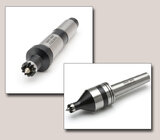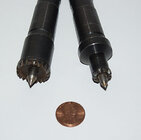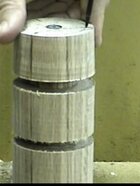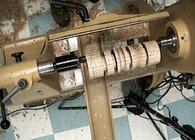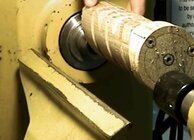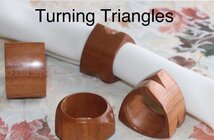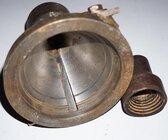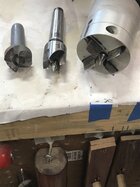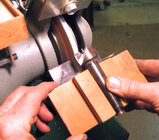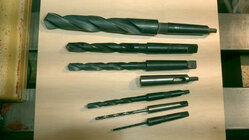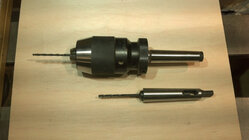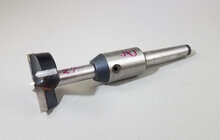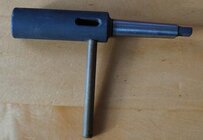Reading a description of one of the high lathes there's a warning not to use large bits because of the chance of damaging the anti-rotation slot in the tailstock quill. Based on the price of those lathes that seemed odd to me.
ABOUT DRILLING, my experience
The way I drill larger diameter holes in almost anything, wood, steel, cast iron, bronze, plastics (except when using Forstner bits or a hole saw in wood) is to
1) Start almost every hole hole with a center bit or spotting bit (ESPECIALLY in end grain on the lathe where a deep hole or precision is desired.)
2) Drill a relatively small hole
3) Drill successively larger diameter holes
4) Depending on the situation, I may drill the depth in steps as well. This makes drilling some deep, large diameter holes easier.
The drill diameter step-up sizes I use were acquired with experience. When in doubt, remove less at a time.
This is in addition to what should be obvious: using an appropriate tool, rotational speed, bit advancing speed and pressure, lubricant.
In any material, clear chips often. There are charts for recommended rotational speeds for various materials.
If drilling deep holes with Forstner bits, a "trick" I use is to direct a constant stream of compressed air behind the bit - this not only clears chips but helps keep the bit cool..
Provide whatever support is needed to align the drill bit and keep it straight. Sometimes this takes a trick or two and some creativity, especially with small diameter bits in metals. (I recently needed to drill a number of 2.5 mm diameter holes in cast iron in nearly unassailable locations, one into a sloped surface.This provided hours of entertainment.).
Center and spsotting bits are very inexpensive.
If possible, I always use taper shank bits on the lathes.
I don't much enjoy drilling holes of any diameter in glass and ceramics.
I've drilled a lot of concrete with SDS hammer drills with carbide tips. Nothing to do with turning, of course, at least not my kind of turning.
Putting holes in thick steels (especially stainless) can be easier with a plasma torch and a die grinder.
With some materials, lung protection is advised. For all drilling, eye protection is advised.
ABOUT TAPPING, a possibly related topic.
And a similar list when tapping materials, with one of the most important things being keeping the tap straight along with keeping it perfectly straignt. For this, where appropriate, I use a manual tapping tool which aligns the tap which is turned by hand.. Where not possible, I tap freehand, carefully. When on the lathe, I tap by hand using a spring-loaded tapping guide - an amazing and inexpensive aid. Taps have either a concentric dimple or a cone on the back end and the guide has a reversible pin that keeps the tap aligned. And still turn by hand. These things are so indispensable in some situations I bought several just in case.
I usually buy from Little Machine Shop but this tapping guide looks similar
The manual tapping tool I use is similar to this, but I didn't buy mine from Amazon:
I know there are taps made for machine tapping but just break off one in the hole and your day may be ruined.
For anyone inexperienced with drilling and tapping various materials, find some friendly person who is. Like my piano teacher always said, everything's easy once you know how.
But I HAVE, on a couple of occasions, repaired a damaged tailstock quill for others. Besides using appropriate force, don't forget to lubricate appropriately.
JKJ

